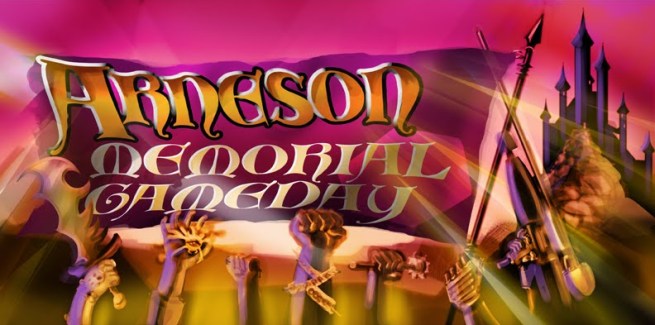Daniel Boggs’ vision of what the original release of Dungeons & Dragons could have been, Champions of ZED, ends its Kickstarter funding period this Saturday, June 16th, at 11:11PM EDT. I’m a backer; here’s why I think you might want to pick this up for yourself, and what a strong showing for this crowdfunding effort could mean for those of us who are interested in roleplaying history.
Last October my family and I drove to Schnectady to go camping, visit Secret Caverns and Howe Caverns, attend the Council of Five Nations gaming convention, and visit Dan and his family. I knew Dan as Aldarron from the OD&D forums, and as D.H. Boggs the author of Dragons at Dawn, and we’d talked by phone while I was putting together the Arneson game day. At some point he told me the story of how he came to have a copy of a manuscript, “…Beyond This Point Be Dragons…”, which – as he relates in his analysis of a D&D archaeological mystery (PDF) – he believes is an alternate branch of the development of the first roleplaying game. BTPBD seemingly reflects Dave Arneson’s further refinement and expansion of a draft that resulted from the initial back and forth between him and Gary Gygax, with illustrations, clarifications, and new ideas that weren’t included in the text that was published as Dungeons & Dragons in 1974.
While I was in Schnectady, Daniel let me take a look at his copy and take a few pictures with my cell phone, which always makes me feel pleasingly like James Bond. At the time I was working on dungeon encounter tables for ACKS, so those are the things I focused on:
A number of fans have expressed their frustration that the Champions of ZED Kickstarter is not publishing this manuscript itself, and I understand where they’re coming from. I’ve got no way to verify its authenticity, although I have great respect for Daniel’s Arnesonian scholarship and find his reasoning about what BTPBD represents convincing. What I can say is that looking over this manuscript gave me a powerful sense of secret history and unrealized possibilities. I wish more people could share that experience, but Daniel is in no position to publish this work directly. I do believe that there are other copies of this and similar historical manuscripts in the hands of people who are better situated to release them; it’s my hope that the show of interest demonstrated by this project convinces someone who can that it’s worth the effort to bring this manuscript to the public.
I don’t really know how many other people will thrill to the revelation that, just as an Evil High Priest is the dungeon-dwelling counterpart of a Patriarch, at one point Arneson made clear that a Superhero goes into the underworld to confront an Anti-Superhero. Of course, I eat this stuff up. But what was really mindblowing was having lunch with Daniel afterwards and talking to him about the things I’d seen in “…Beyond This Point Be Dragons…” and the even more interesting things his immersion in the early D&D texts allowed him to spot that I had missed. It’s valuable to see an alternate Arnesonian experience point system; it’s fantastic to have Daniel put this in the context of Arneson’s writing like The First Fantasy Campaign , an analysis of how many experience points are potentially distributed in Dave’s dungeons, what interviews with him and his players suggest, etc. This is the kind of thing I’m confident Champions of ZED will deliver; this is why I’m looking forward to getting my copy.
Champions of ZED is fully funded; it doesn’t need your support to become a reality. But if you care about the kinds of roleplaying history we talk about at the Mule, you owe it to yourself to pick up CoZ and whichever of the backer rewards catches your eye. Go now, I’ve left this post until it’s almost too late!









What People Say to the Mule